Note: Today, I will revisit some of my writings from fifteen years ago and then expand on the topic of health and performance.
According to Prof. Bayevsky, at any given moment, between 50 to 80% of all people are in the so-called donozoological state, or between health and illness. According to academician Nikolay Amosov, these people are only “statically healthy” — until the environment disrupts their fragile status quo. Although they may be feeling fine, even a mild infection is potentially dangerous to them. Not the infection itself, but the complications from the strain it puts on the supply systems. You might know someone who died of a cardiac arrest while struggling with some other malady.
Say, Bob’s tissues need a gallon of blood a minute at rest and his heart can pump out 1.3 gallons per minute max, which is average — this is called the maximal cardiac output. Everything is fine and dandy — until the man goes to South America and catches typhoid fever. His energy requirements skyrocket. Fighting a disease is not unlike performing hard labor. Typhoid fever doubles one’s oxygen consumption. The heart now has to pump two gallons of blood per minute. Except…its limit is only a gallon and a half. Bingo. The traveler returns home in the jet’s cargo bay in a body bag. The man died from failure of systems that were not even stricken by the disease. Had Bob cared to work on increasing their functional reserves, he would have survived.
The Problem With Bob
Academician Amosov coined the term “the quantity of health,” or the sum of the reserve powers of the main functional systems. These reserve powers are measured with the health reserve coefficient, the ratio of the system’s maximal ability to the everyday demands on it. For example, Bob’s heart’s reserve coefficient is 1.3:
 Obviously, to improve your quantity of health, you need to increase the reserves of your functional systems, cardiovascular, pulmonary, muscular, etc. There are over a hundred measurable health parameters. Individual adaptation has been defined as gradual development of resistance to a particular environmental stimulus that enables the organism to function in conditions earlier incompatible with life and meet challenges that previously could not be met.(1) In other words, adaptation is about survival.
Obviously, to improve your quantity of health, you need to increase the reserves of your functional systems, cardiovascular, pulmonary, muscular, etc. There are over a hundred measurable health parameters. Individual adaptation has been defined as gradual development of resistance to a particular environmental stimulus that enables the organism to function in conditions earlier incompatible with life and meet challenges that previously could not be met.(1) In other words, adaptation is about survival.
The path to health seems simple: train hard, increase your “quantity of health,” and live happily ever after. If Bob built up to the point of being able to swim non-stop for an hour a day, surely he would have built enough heart capacity to survive typhoid fever! Certainly — while making himself more vulnerable to other stressors.
The Cost of Adaptation
A number of Soviet and Russian textbooks, from the 1970s until today, cite a study of young rodents undergoing an intense swimming regimen — one hour a day for ten weeks.(2) Their heart mass increased while the mass of their kidneys and adrenal glands went noticeably down, and so did the number of the liver cells.
In other words, while the training increased the functional capacity of the heart, it simultaneously reduced the capacity of several inner organs. If later the “athletes” from the study encountered significant physical loads, they would be better prepared to handle them and survive compared to their untrained peers. If, on the other hand, the challenge were directed at the liver or kidneys (through a change of food, an increase of sodium intake, etc.), the hard training rats would be at a disadvantage compared to their lazy brothers and sisters.
This phenomenon is called the cost of adaptation.(3) The cost can be exacted from the systems of the body directly loaded by the stressor — or from other system(s) not directly involved in dealing with the stressor.(4) The focus of this blog is on the latter.
You Must Rob Your Health to Pay Your Sport
You just saw one example in the unfortunate rats whose swimming dedication made their livers less resistant to vodka (a tragedy where I come from). Another example is female machinery malfunctions typical in young girls who are high-level athletes in bodyweight sensitive sports like gymnastics. Even worse, the muscles of a hard-training and dieting young gymnast cannibalize some of the heart muscle to find some precious protein.
When supply is tight and demand is high, competition for the resources is fierce. Years ago, a Russian named Martinyuk even proposed a cancer treatment based on this fact. He suggested putting patients on an ultra-low protein diet and an intense bodybuilding regimen at the same time. As his theory went, the body would search for places to cannibalize proteins for the muscles and the tumor would be one of the places it would go first. To the best of my knowledge, no studies of the sort have ever been conducted, but I hope they will be. If you know an oncology researcher, pass this idea along.
Back to sports. If you choose to excel in a sport, you must face the fact that your decision has nothing to do with health. You are going to rob Peter (your resistance to illness and your ability to excel in other pursuits) to pay Paul (your sport). In elite sports, where the body performs at the edge of its capacity and all resources must be thrown at the “war effort,” there can be no other way.
To mitigate the downsides:
- Start with a great foundation of GPP.
- Avoid early specialization. (Negative adaptation in organs and systems not directly challenged by specific training is especially pronounced in immature organisms.(5))
- Do not force the rate of your progress.
If you choose health, do not reach for Olympic medals, avoid narrow specialization, and train in moderation. Because high adaptation cost is experienced especially by specialist athletes and people who perform hard physical labor.(6)
Soviet research teaches us that sport training and physical culture lead to a significant decrease in diseases overall and injuries.(7) Renown Soviet scientist Prof. Zimkin concluded, “It has been determined from animal experiments and observation of human subjects that muscular activity increases the organism’s non-specific resistance to many unfavorable stressors people are subjected to in modern conditions, e.g. hypoxia, some poisons, radioactive materials, infections, overheating, overcooling, etc. A significant decrease in illnesses has been observed in people training for sport or practicing physical culture.” He went on to add that “rational” training is what is needed to deliver such resilience.(8) Moderate physical loads stimulate the immune system.(9)
Options That Blend Strength and Health
Train for and compete in raw drug-free powerlifting—without attempting to max your muscle mass. It is fact that to be competitive internationally a six-footer has to be a super-heavyweight. Obviously, pushing your bodyweight to 300 is going to carry a high adaptation price sticker.
Learn the lifting basics at a one-day StrongFirst Lifter Course. Find reliable training partners and hit the platform.
Do not forget to address your other qualities, such as flexibility and endurance. Two days a week do the S&S regimen. Do some mobility and stretching almost every day. Last but not least, live an active outdoor life — hike, swim, play tennis, etc. In moderation! Running from rim to rim of the Grand Canyon is going to exact an adaptation price from your powerlifting and your health.
Study a martial art. Take classes three to five times a week. Enjoy what you learn without ambitions to become a champion or a grandmaster. Do “easy strength” type training with a barbell three times a week. Take yoga classes on the nights you do not fight. Start “tempering” with cold water. And do not forget the outdoors.
Become a student of bodyweight strength. Learn the basics of tension and linkage at a one-day StrongFirst Bodyweight Course. Master the basics. Reach the “simple” goals like the one-arm-one-leg push-up. Then set your sights a little higher, e.g. the front lever and free handstands.
Almost every day do the S&S swing regimen to give power and conditioning to your lower body and back. Do get-ups twice a week. Get serious about stretching and slowly work your way to full splits.
As with the other two options, outdoor activities are not negotiable.
Which Path Do You Choose?
Because your body’s adaptation resources are finite, you have to choose how to allocate them. There is no one correct answer. You have “X” dollars in your pocket. Do you buy a new couch or take a vacation? Do both and go in debt? Or buy a cheap couch and take a short vacation?
Exercise your free will.
References:
1. Meerson & Pshennikova, 1988
2. Vorobyev, 1977; Bloor et al., 1968
3. Koberg, 1997
4. Slonim, 1979; Kamskova, 2004
5. Platonov, 1988
6. Volkov, 2000
7. Rosenblat, quoted in Zimkin, 1975
8. Zimkin, 1975
9. Yakovlev et al., 1990
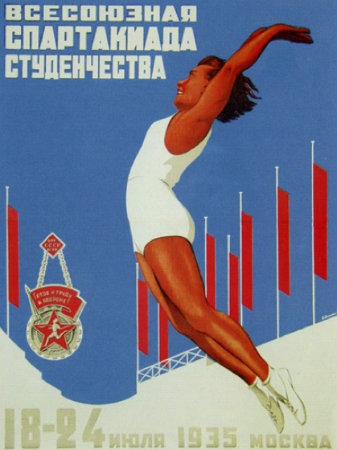
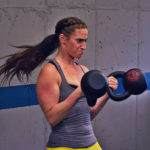
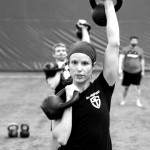
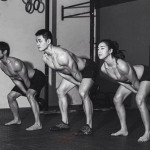
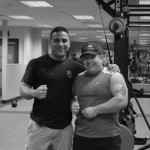

I read almost every book of Pavel Tsatsouline. He ralely understands strength development. Reading he’s book I began to understand that most strength coaches demand whey too much from there athletes. Many strength workouts that should be for basketball players or athletes doing similar sports look more like workouts for bodybuilder. So the ten rep rule is very important because it does not interfere with skill training. You should actually feel stronger after a strength workout and not exhausted and sore. An other advantage is the the workouts are much shorter then usually recommended program, that leaves you more time to work on your sport specific skills.It blows my mind when I see how a lot of coaches do plyometric training. It’s often whey too much stress on the athlete’s bodies. Yuri Verkhoshansky (the inventor of the depth jumps) for example recommends that you shouldn’t do any depth jumps until you are able to squat 150% to 200% of your body weight. I can highly recommend his books superstrength and Special Strength Training Manual for Coaches . But I think the programs recommended in the books are only for very elite athletes. Easy Strength explains very well how you can apply some of Verkhoshanskys ideas to less developed athletes. For example it is recommended that children should do sports on very broad basis, very similar to the LTAD model you recommend for children. The book also includes a very good part about plyometrics (referring to Verkhoshanksy) and there’s also a very interesting part about bare foot running. The book is available on Dragon Door homepage.
This short article is possibly one of the best things I have read. I’ve come back to it at least four times. It has generated a lot of reflection and thought.
I know I’m late to the party, and you’ve probably heard this already, but this was without a doubt the most fascinating article I’ve ever read here. I really, really enjoyed it. Please keep these science-y posts coming from time to time!
Hello Mr. Tsatsouline, thank you for the great article! I hope it is OK for me to ask 2 short questions.
1.) Is the RoP another valid option for this type of training? I do TGUs and deficit sumo deadlifts with KBs (linked with chains and carbines) on my Variety Days and stretch on my 2 Off-Days.
2.) Are you planning a new book as a substitue for the RoP part of ETK?
Thank you for your time and continue the good work 🙂
~Bernd~
Thanks for a brilliant article. Have and will pass on to all my clients. Have always liked all kinds’a training, but THIS…is exactly what I’ve been looking for. Thanks again and hopefully I can get that SFG1 next year!
Strong on! 🙂
Pavel,
I am a Catholic priest. When I was taking care of an elderly fellow Jesuit missionary in the last year of his life the doctor told him he needed to eat well and workout in order to recuperated. He was very deteriorated. For years he ignored my advice but at last he listened to the doctor. I put him on a ‘Original Strength’ program with air squats holding on to a gate and some other light movements. It was remarkable how the increase of his overall strength helped his well being. Perhaps too little too late, but he was able to celebrate Mass and hear confessions until 2 weeks before his death.
God rest his soul, Vincent.
Best article yet! Don’t know if anybody has ever said it as well, or if anybody else even could say it as well!
Thanks, Matt!
Great article Pavel. A excellent reminder of the fundamentals of strength and conditioning and the costs associated with pushing the high intensity period too far. High level athletes have a greater support system (physical therapists, recovery and rehabilitation tools, etc.) but still have to toe the line between overall health and optimal performance output. There are so many high level athletes who compete in their sport for over a decade. The key for their prolonged success must be rational training and rest in the off-season? You can obviously program deloading into training but not into athletic competition itself, how do they do it?!
Hans, loading and deloading are science and art. But there is hardly any off season and hardly any rest these days.
Thank you for putting your thoughts on paper, Pavel.
This article really resonates with me because my interest in physical culture is a throwback to the old “Strength and Health” philosophy more prevalent over thirty years ago (before my time).
Current thinking, amongst serious trainees, overemphasizes the “strength” component (whether it be defined by a 1RM or VO2 max) while ignoring the “health” component under the false assumption that improving the former takes care of the latter. “Stronger is harder to kill and therefore more useful”, is the present motto of many performance coaches. Intuitively that has never felt right to me. You don’t need years under the bar to realize that forcing better numbers comes at a cost (ie: joint strain, reduced mobility, general reduction in daily well-being, etc…).
Of course there are those on the complete opposite end of the spectrum doing BOSU overhead squats in the name of “health”, but they are for another discussion…
I have read some Ian King’s works alluding to the concepts in this article, but, with all respect to Ian, none as explicit and clear as this article.
I hope the ideas shared in this article will be explorer again in future articles.
Thanks again.
Thank you for your kind words, Marc-Antoine!
I wish coaches and athletes were that focused on strength. You are right that health does not appear high on the list either.
Thanks, gents!
Great article. Premise is spot on.
Regarding the rat study:
10 wks x 1hr/day at a high intensity.. I’m surprised those rats made it through 10 wks alive!
Even rats need periodization 😉
Excellent article, Chief!! I have translated it to Korean and posted it to the StrongFirst community here in Korea!
StrongFirst Lifestyle Blueprint? Oh yes!
Excellent article, Chief – already translated to Czech, will be published ASAP!
Inspirational and practical as always. Thank you Pavel.
Pavel must have read my mind.
Adaptability was an issue that I had lots of thoughts, as result took punches and kicks to my face.
This article answered quite a bit of my problems.
Thank you, ladies and gents!
My recipe for perfomance and health – S&S (thank you Pavel) 4-5 times per week + banya [steam bath] (thank ancestors) on weekend.
Great article Pavel. Fantastic example of aiming for moderation in most things being the best for health, and the difference between fitness for sport and health. In my job as a physician I am constantly exposed to people at both ends of the bell curve – those who overtrain and end up with acute or chronic injury or illness eg tendinopathy, or those who don’t train at all and end up again with either acute or chronic injury or disease – eg diabetes. It is refreshing to see such sensible advice presented so succinctly!
Well put! My thoughts exactly! This craziness of training the everyday individual for sport over health is getting tiresome. Balance is needed.
I am former professional bodyboarder, being an professional athlete for over 20 yrs. I trained Capoeira JJ as my main martial arts, outdoors for me is where everything is. I just cant live without the surf and for sure training outdoors like hitting sand dunes is no program for me, is where I am me. I also had so many injuries in my career such as fractured neck in a wave pool, hit my spine on the reef(no fractured) , twisted ankle and pulled hamstring in the past. You name it. I love KB to death but atm I cant do swings as my hip gets aggravated. There is no serious program since I am dealing with back issue due to a bulge disk. So reading this makes me jealous to miss out on the serious program part, as for now is slow program. Being a Physical Trainer, I am learning a lot about my body and that helps me help others with their own issues. I always tell my clients to get outdoors, since training indoors should stay limited. Love this reading a lot. Thanks for sharing.
Another great read from “my” strength guru.
Love this article Pavel! Keep up the good work!
Great article. The adaption response is key to growth and skill development. Funny that you recommend S&S, as it is already part of my daily routine. I find the TGU to be an excellent movement to start my day and swings an excellent way to finish a squat/deadlift/bench press session.
Excellent article.
Any chance Pavel can write an article about Buteyko’s theory of co2 in the role of health and exercise specifically in relation to breath?
Cheers
Thanks, Terry!
I am sure you could find enough information about Buteyko’s system online these days; it is not exactly fit what we talk about at StrongFirst.
So if I read correctly, if your following a powerlifting type plan you would do s&s two days a week? Would it matter which days? I have read not to do lower body conditioning the day before lower body workout days.
Now this comment isn’t to nitpick, but I am a little confused. Everyone basically says not to add anything to the S&S program, but it’s acceptable to add s&s to other programs?
Hunter, do SQ/DL at night and swings the morning after.
Reread S&S; this is the recommendation for PLers.
Thank you, Pavel, uniquely you and comforting to see someone who knows talking about this.
“the system” while straightforward has breadth
“I will choose a path that’s clear
I will choose freewill.” N. Peart “Freewill”
That was unexpected and awesome.
Thanks, Russ!
Great post Pavel.
Thoroughly enjoyed reading that.
The post keeps everything simple and for an average joe like me, it all makes sense.
I love your analogy at the end of the post about the couch and the vacation.
Personally, I am having fun and enjoy training/practising when I am doing random things, lifts with barbells, kb stuff, mobility and stretching, hikes, bike rides, swim – you get the idea.
but I am more motivated and mentally driven when I am following a program and looking to up my Front Squat or Clean etc.
Dilemna is to Program or not to Program? especially when the goal (long term) is general health, strength and fitness.
Thanks, CJ.
“To program or not to program.”
Program your lifting; freestyle your outdoor activities.
This article is so helpful on a big-picture level to thinking about that elusive quality in life known as “balance.” It really helps make sense of the more specific guidance and articles I have seen on this website, and the StrongFirst approach in general. I think it will be considered a classic one day.
Thanks, Chris!
Probably the dumbest thing I’ve seen on the internet todate: “He suggested putting patients on an ultra-low protein diet and an intense bodybuilding regimen at the same time. As his theory went, the body would search for places to cannibalize proteins for the muscles and the tumor would be one of the places it would go first. To the best of my knowledge, no studies of the sort have ever been conducted but I hope they will be. If you know an oncology researcher, pass this idea along”
Derringer
The idea under a tightly controlled closely supervised trial may have more merit than seems on the surface.
fasting has been tried during radiotherapy and chemotherapy and is believed to have benefits.
an extremely low carbohydrate diet was being trialled in Europe a while back, haven’t heard any outcomes on that. given that insulin is a growth stimulator and hi carb tends to increase inflammation etc etc AND cancer cells love glucose (the Warburg effect), they hate a low glucose environment (in vitro, anyway) lots of reasons to for such a trial and to expect benefits. Google sufficiently and you will find this information. [Of course, like all things, too much, too soon or too little, too late without expert medical advice may lead to unpredictable or unintended adverse consequences ie no one reading who actually has “cancer” should try the above idea without expert medical input and very close supervision]
Pavel,
Thanks for the article, wish I read Russian and had access to all that information. More articles\products around this GPP\adaptation topic and its application to specific health based goals would be great. thanks. OB
Thanks, OB!
this post is timeless. what I struggle with is listening to the indicators that might clue me into a positive adaption in one area creating a deficit elsewhere and doing so in time to idle back certain stressors enough to move everything forward together (if that’s possible). But which ones do I idle back? Along with the physical training, should we also consider other stresses to our systems; difficult economic issues, trying to clean up diet, lack of sleep, improving in your field of employment, living with teenagers, finding time to keep a clean house, and ideally get a date night with your spouse, all while training enough to accomplish ones goals. I guess, just like the message of staying with a sensible training program, like S&S, to meet a long term goal, like hitting the Sinister level and not sprinkling in too many goals at once would help to adapt body and mind universally. “because your body’s adaptation resources are finite” for me is the key to this post, always keeping that in mind and tempering my expectations, sure I would love to get rid of all of my fat and get ripped to shreds, be the most efficient employee in the office everyday, be able to run fifty 400m repeats all under a minute, but right now (and for the past 2 years) my goal has been to perform 5 TGUs per side with The Beast, and take a daily walk on the trails with my dog … all else will have to wait. Thanks Pavel for helping to restore some sense to my hectic mind and keeping me on track.
Marchese, noone said the decision will be easy ;]
For many the answer is S&S plus recreational training in one sport plus varied outdoor activities.
Excellent post Pavel and great timing as I had a similar conversation with a friend recently about the cost of exercise.
Too many PTs in gyms around the world seem to be doing more damage than good by focusing on short term results, dangerous exercises and dangerous programming rather than long term health and fitness (whatever fitness means for you!). Is getting a group of 50 year olds doing set after set of explosive jumps onto uncushioned surfaces really going to do them any favours long term?!
It would have been great to see the inclusion of what bodyweight exercises should be included and avoided for longer term health from your perspective. Maybe another post?
Carl, provided there are no health restrictions (heart, joints), etc., 50+ folks should train in the same manner as younger athletes—just more carefully, with serious attention to mobility and symmetry, etc.